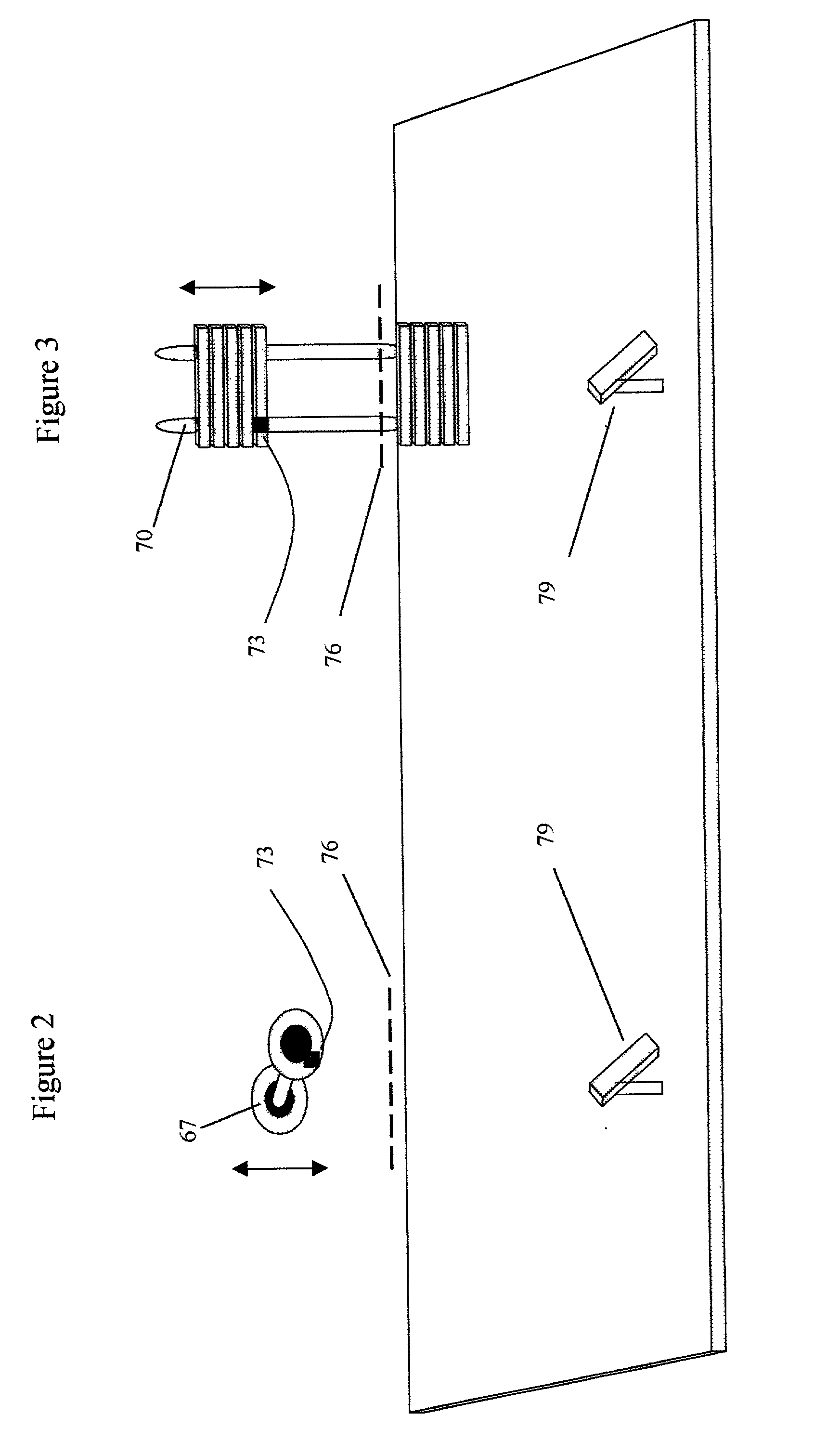Computerized repetitive-motion exercise logger and guide system
a technology of repetitive motion and logging system, which is applied in the field of collecting athletic performance data, can solve the problems of difficult to collect performance data of one's exercise regime without an extra person, tedious manual record-keeping, and the inability to meet the needs of a single person, and achieves the effect of reducing the number of times of recording
- Summary
- Abstract
- Description
- Claims
- Application Information
AI Technical Summary
Problems solved by technology
Method used
Image
Examples
Embodiment Construction
FIG. 1, Software Pseudocode Listing
[0219] As can be seen in FIG. 1, the controller module 46 is the core of the system. The controller module and its software program provide a controller means for coordinating interactions between several other logical groups of components. The particular controller module used in this embodiment is a Basic STAMP IIE produced by Parallax, Incorporated.
[0220] The controller module also contains an integrated memory which is comprised of an integrated data memory for storing logged data and an integrated routine memory for storing preprogrammed exercise routines and user profile data. This is provided by 16K of online EEPROM.
[0221] The company Parallax, Incorporated provides a development environment for their controller module. The development environment is used on a host computer to write the programs in a language called PBASIC. The programs are then downloaded to the controller module 46 via the communication interface 55. A built-in interpreter...
PUM
 Login to View More
Login to View More Abstract
Description
Claims
Application Information
 Login to View More
Login to View More - R&D
- Intellectual Property
- Life Sciences
- Materials
- Tech Scout
- Unparalleled Data Quality
- Higher Quality Content
- 60% Fewer Hallucinations
Browse by: Latest US Patents, China's latest patents, Technical Efficacy Thesaurus, Application Domain, Technology Topic, Popular Technical Reports.
© 2025 PatSnap. All rights reserved.Legal|Privacy policy|Modern Slavery Act Transparency Statement|Sitemap|About US| Contact US: help@patsnap.com



